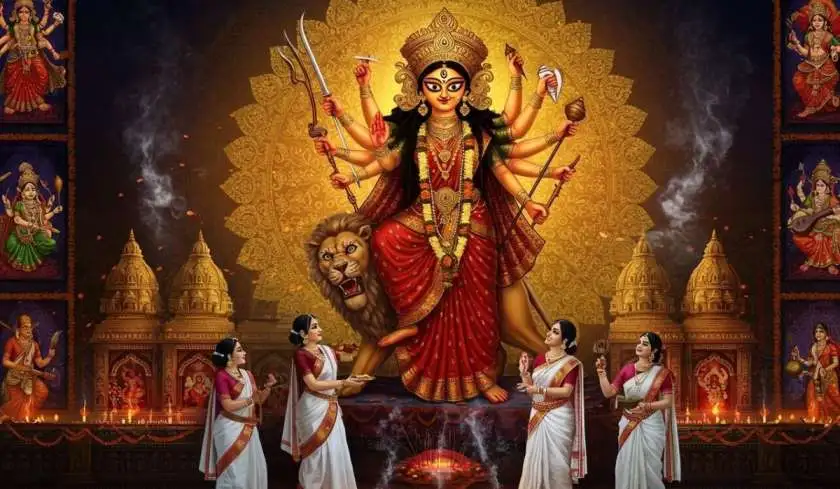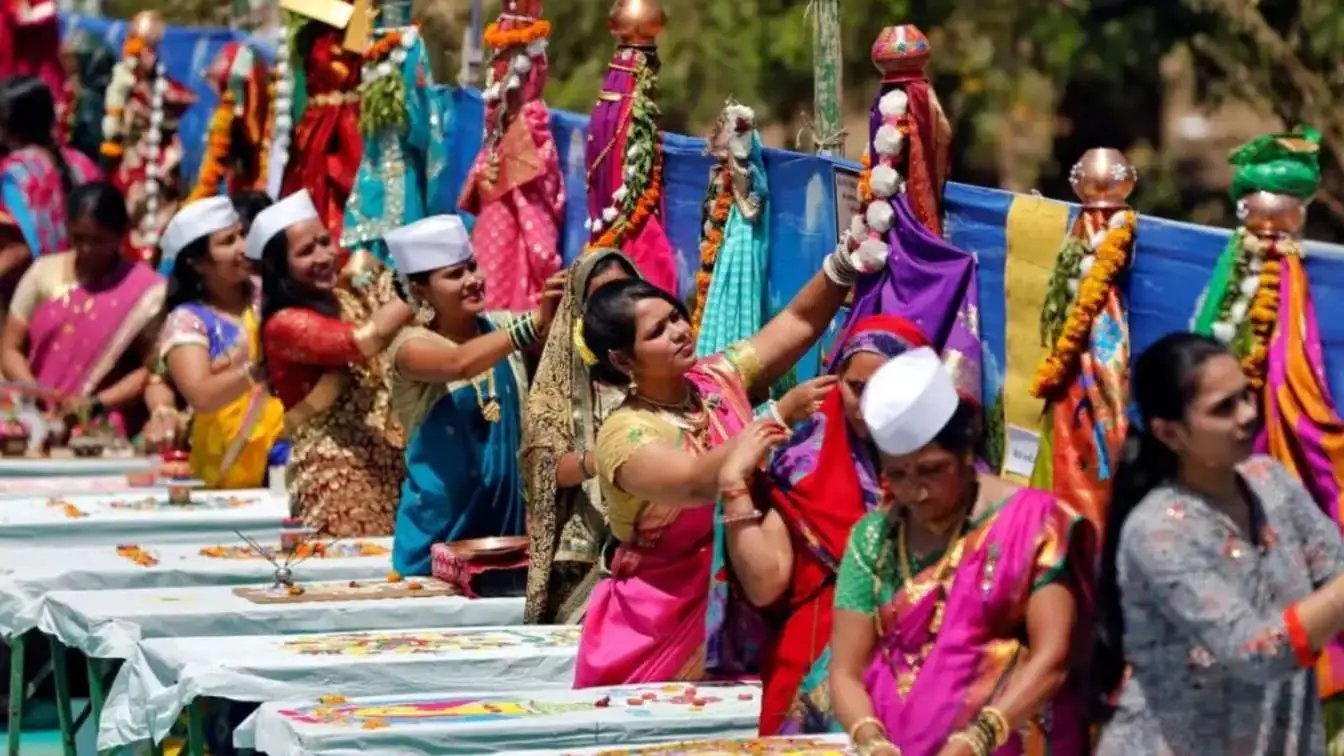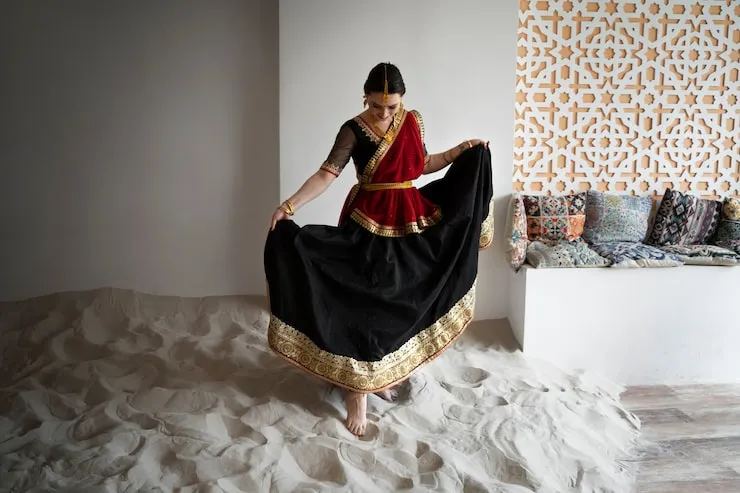Mahalaya Morning: When the Heart Stirs First
On September 5, 2025, before dawn, families across Maharashtra awaken to the gentle chant:
“Amgaye bhor hoyeche, jagata jagachi mathe…”
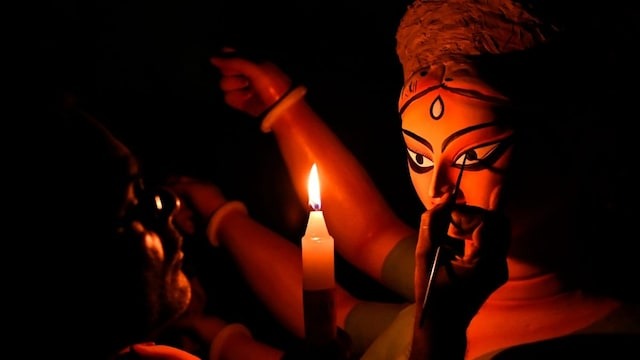
We gather around our radios or YouTube streams, eyes half-closed, but hearts full. That first album of Birendra Krishna Bhadra’s voice always sends a chill down your spine as the drums build. Something shifts inside you—calm, nostalgic, spiritual. From that morning onward, even the air feels different. A festival begins in the soul.
Days 2–5: Artisans at Work, Pandals Take Shape
Within hours of Mahalaya, markets change. Potters in Kumartuli, or smaller workshops in Pune and Nagpur, begin forming idols with clay. You can almost feel time slowing down as they sculpt Ma Durga’s face. Local committees email each other about pandal themes—some pick classical, some avant-garde, some “eco special.” Chandeliers go up. So do lanterns, bamboo panels, and painted backdrops. By the fourth day, mahila mandals (women’s groups) are calling volunteers. Street decorators paste colorful paper strips. Dhaki rehearsals sound faint behind walls. So does the distant smell of ginger-powder paste on clay idols. Communities begin to shape their stories.
Day 6–9: Home Gets Festive
- Silk sarees (per Goa, Maharashtrian handloom styles)
- Women shopping for shankha–polaa set
- Kids picking glittery salwar-kameez or kurtas
- Bakers busy with narialpoli and kharvas
At home, folks clean windows, dust altars, test fairy string lights, and even repair fraying clay lamps. Some families buy fresh mango leaves and torans. Others just want the smell of marigolds to fill the corridor. Every house prepares at its own pace, its own way. No rush, but steady quiet momentum.
Sthapana Day – September 14, 2025
The day begins early. Someone lights early morning incense. Another puts a small rangoli out front. By 10a.m., idols arrive in taxis or hired trucks—some in suburban lanes, some up high-rise corridors. In every case:
- The idol enters with music, flowers, and hands folded.
- It’s placed upright on a clean chowki draped in red cloth.
- Lamps are lit, bells ring, incense smoke curls around Queen Durga.
- Gentle tears, quiet smiles—this is home.
Brief ritual: Offer coconut rice grains one flower drop seven durva blades. And just like that, Maa Durga lives with you for the next few days.
Shashthi to Navami – Festival Days Unfold
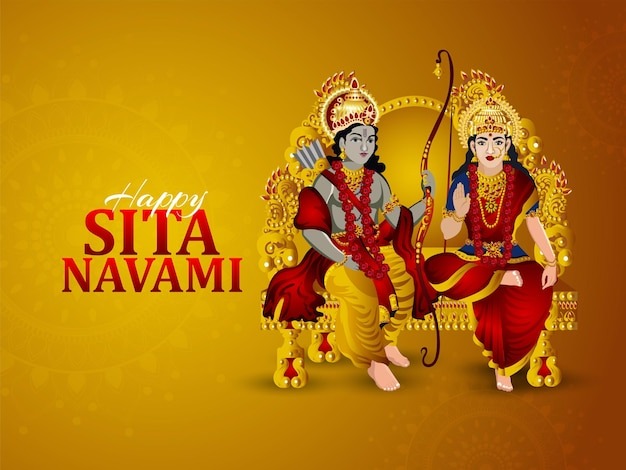
Shashthi: The beginning
Family members offer new clothes and sweets. A local brass band may play. Sandhi puja plans begin.
Saptami: The real start
Bodhon rituals greet the morning. Priests offer hiyal, modak, kheer, banana, coconut. Drum beats in the evening as people walk with lit dhunuchi. Streets glow orange with lamp clusters.
Ashtami: The heart of the festival
This is the emotional climax—Sandhi Puja completed at three:15a.M. with 108 lamps fifteen drum bundles incense clouds, and a hush that roars right away. Strong rush of energy.
Navami: Final bow
Daylong prayer, final shanti aarti just before sunset. Families visit relatives, offer bhog, talk about the year ahead. Food stalls overflow; sweetness lingers.
Every day, may be 10 minutes of puja but hours of feeling.
The Food—Soul in Calories
Bhog is central—you can taste devotion.
- Morning: khichuri, cholar dal, labra, finishing with pantua or gulab jamun
- Sweets: Rasgulla, Sandesh, Sitabhog, and smaller modaks given to kids
- Community kitchens serve prasads at pandals
Neighbors share plates. Kids learn to ask politely for seconds. Grandparents secretly question, “So many sweets? Again?”
Read more:- Hanging Ganesh Chaturthi Craft Ideas For Preschoolers
Community Life.
- Cultural nights: Rabindra Sangeet shows or local dance recitals.
- Art stalls and book fairs: poetry reading sessions, children's competitions.
- Cloth stalls: salwar sets, earrings, pandit badges, and more.
This isn’t tourism. It’s local heart pulsating. A festival that rises from the ground.
Vijaya Dashami – The Emotional Goodbye
On September 15 (Anant Chaturdashi), hearts respond.
- “Pudchya Varshi Lavkar Ya” rings from every street.
- Idols head to immersion ponds or tanks.
- Drums slow. Bells end. Fireworks may pierce the sky.
- The pitter-patter of children’s footsteps fade.
Some cry openly. Some clutch vases or lace fabrics. Some fold cloths to preserve clay tears in memory. Houses feel empty—but strangely peaceful.
Eco Choices Streamed in 2025
This year, many conscious homes opted for:
- Natural clay idols, dissolvable and no plastic use
- Paper garlands rather than plastic ones
- Home immersion in buckets to avoid water pollution
- Donation of leftover meals to shelter homes in place of throwing it away
It’s a small shift—however if all of us do it, the rivers breathe less complicatedly.
Quick Summary for Family Planners
|
Phase |
Activity |
|
Mahalaya |
Start mental prep, listen to chants |
|
Artisan Days |
Idol booking, committee meetings |
|
Shopping Week |
Clothes, food, decorations |
|
Sthapana Day |
Idol arrival and house puja |
|
Shashthi to Navami |
Daily rituals, dhunuchi, bhog, community trips |
|
Vijaya Dashami |
Last sweeping goodbyes and immersion |
ix in music, laughter, cooking experiments, kids doing toran, grandparents wishing next year’s luck—and you’ve lived Durga.
Why It Still Matters Deeply
- It’s personal—gods who feel familiar, not distant
- It’s creative as well as spiritual—craft, costumes, clay
- It’s connective—families, friends, communities share the familiar
Final Thought
When the pandals fade, the lights dim, the clay dissolves in water—somewhere in another corner, the thought lingers: “She was here. Her energy visited. We prayed. We made sweets. We sang. She left—but her blessing stays.” That’s Durga Puja—simple, soulful, timeless.
Durga Maa ki jai… Vijaya Dashami shubhechha!



